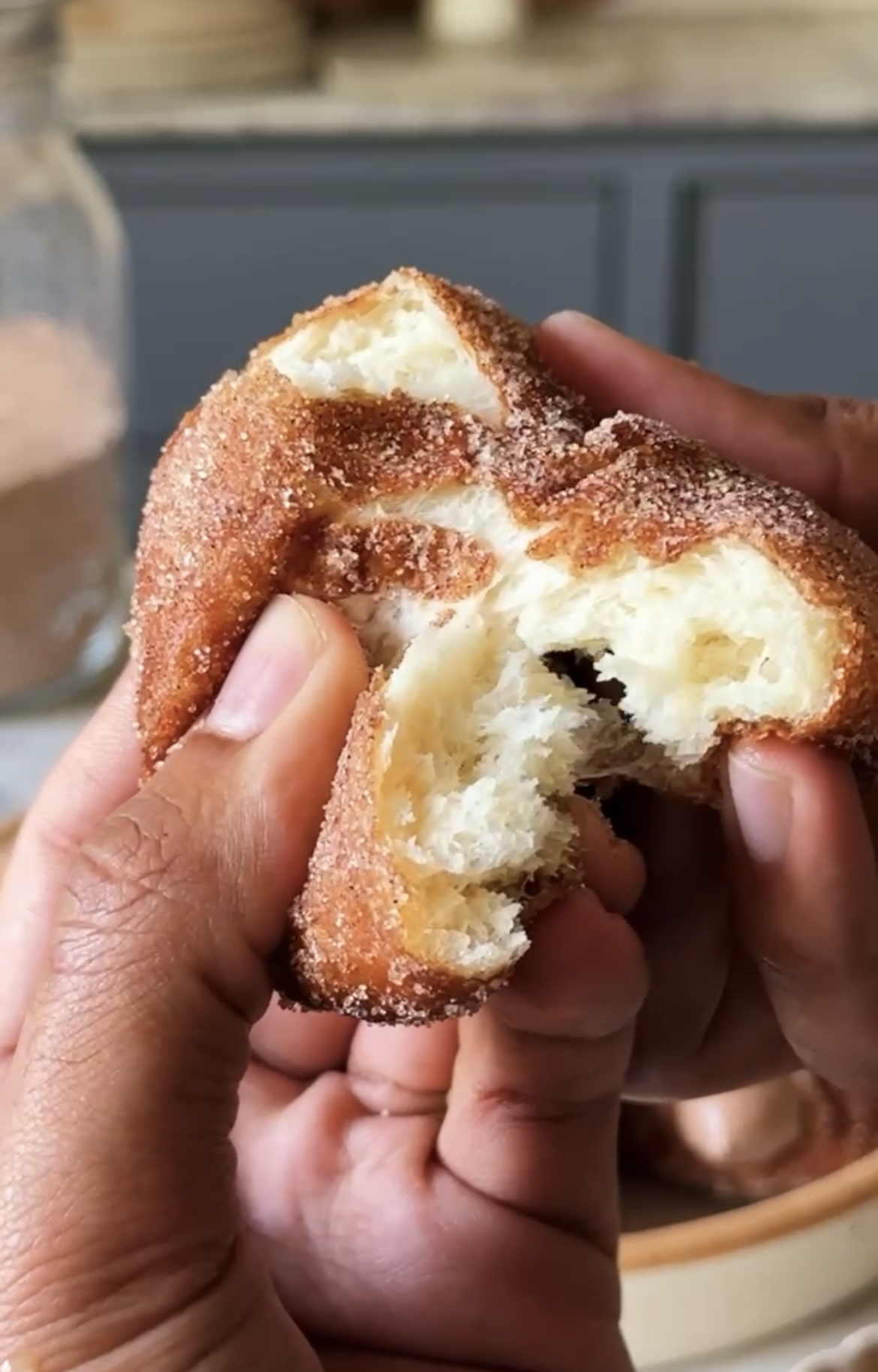Yeast is one of the most fascinating and indispensable components of baking. This tiny microorganism has the power to transform dough into fluffy bread, create the airy texture of croissants, and contribute to the delightful tang of sourdough. While often underestimated, yeast is not just a simple leavening agent—it’s the magic behind many beloved baked goods and fermented foods. In this comprehensive guide, we’ll explore the different types of yeast, their uses, tips for working with them, and the nuances that make each type unique. Whether you’re a seasoned baker or a curious beginner, understanding yeast is the first step toward mastering the art of baking.

WHAT IS YEAST?
Yeast is a single-celled fungus that thrives on sugars. Through a process called fermentation, yeast breaks down sugars into carbon dioxide and alcohol. This process is not only responsible for the leavening in bread but also contributes to flavor, aroma, and texture.
Yeast is alive, and like all living organisms, it has specific needs:
- Moisture to stay active.
- Warmth to thrive (optimal temperature: 25–38°C).
- Food in the form of sugars or carbohydrates.
Without yeast, many of the baked goods we know and love today would not exist in their airy, soft, or flaky forms.
WHY IS YEAST ESSENTIAL IN BAKING?
Yeast plays a multifaceted role in baking:
- Leavening: The carbon dioxide produced by yeast causes the dough to rise, creating the airy texture in bread and other baked goods.
- Flavor Development: The fermentation process adds depth and complexity to the flavor of the final product.
- Structure and Texture: The gas bubbles created by yeast give bread its characteristic crumb structure.
- Nutritional Benefits: Yeast is a natural source of vitamins like B-complex and contributes to the nutritional profile of baked goods.

TYPES OF YEAST
Yeast is available in various forms, each suited to different baking needs and processes. Here’s an in-depth look at the most commonly used types of yeast:
ACTIVE DRY YEAST
Active dry yeast is perhaps the most widely recognized type of yeast, particularly for home bakers. It consists of dormant yeast granules, which must be rehydrated before use.
- Characteristics:
- It comes in coarse granules.
- Requires proofing in warm water (35–40°C) before adding to dough.
- Has a long shelf life if stored in a cool, dry place.
- Advantages:
- Easy to store and transport.
- Works well in recipes requiring a slow, steady rise.
- Best Uses:
- Traditional bread, bagels, and pizza dough.
- Drawbacks:
- Slightly slower activation compared to instant yeast.


INSTANT YEAST (QUICK-RISE YEAST)
Instant yeast is a finer, more convenient version of active dry yeast. It is processed to allow it to dissolve and activate directly in the dough without the need for proofing.
- Characteristics:
- Finer granules than active dry yeast.
- Does not require proofing; can be mixed directly with dry ingredients.
- Activates quickly, making it ideal for shorter recipes.
- Advantages:
- Saves time by eliminating the proofing step.
- Ideal for quick-rise recipes.
- Best Uses:
- Dinner rolls, no-knead bread, and enriched doughs.
- Drawbacks:
- Can lead to over-fermentation if not used carefully in long-rise recipes.

FRESH YEAST (CAKE YEAST)
Fresh yeast, also known as cake yeast, is a moist and highly perishable form of yeast. It is favored by professional bakers for its superior flavor and leavening capabilities.
- Characteristics:
- Comes in a block form and is soft to the touch.
- Has a shorter shelf life and must be refrigerated.
- Requires proofing in warm liquid (35–38°C) before use.
- Advantages:
- Produces a more delicate, nuanced flavor in baked goods.
- Preferred for artisan and specialty breads.
- Best Uses:
- Pastries, croissants, and sourdough loaves.
- Drawbacks:
- Less convenient due to its perishability.

Comparison Table: Active Dry, Instant, and Fresh Yeast
| Feature | Active Dry Yeast | Instant Yeast | Fresh Yeast |
| Granule Size | Coarse | Fine | Soft block |
| Proofing Required | Yes | No | Yes |
| Activation Speed | Moderate | Fast | Moderate |
| Shelf Life | Long (up to 2 years) | Long (up to 2 years) | Short (1–2 weeks) |
| Storage | Cool, dry place | Cool, dry place | Refrigerator |
| Flavor Contribution | Moderate | Moderate | High |
| Common Uses | Bread, pizza dough | Quick breads, rolls | Pastries, artisan bread |
OTHER TYPES OF YEAST
WILD YEAST (SOURDOUGH STARTER)
Wild yeast refers to naturally occurring yeast present in the environment. It is captured and nurtured in a mixture of flour and water, commonly known as a sourdough starter.
- Characteristics:
- Unique flavor profile.
- Requires ongoing feeding and maintenance.
- Works slower than commercial yeast.
- Best Uses:
- Sourdough bread, rustic loaves, and long-fermented doughs.
- Tips:
Maintain your sourdough starter regularly to keep it active and healthy.
NUTRITIONAL YEAST
Nutritional yeast is a deactivated form of yeast, often used as a condiment or dietary supplement.
- Characteristics:
- Flaky or powdered form.
- Rich in nutrients, particularly B-vitamins.
- Adds a cheesy, umami flavor.
- Best Uses:
- Vegan recipes, soups, salads, and popcorn seasoning.
- Tips:
Do not confuse it with baker’s yeast—it won’t leaven bread.
BREWER’S YEAST
Brewer’s yeast is a byproduct of beer brewing. Like nutritional yeast, it is deactivated and used for its nutritional benefits.
- Characteristics:
- Bitter flavor.
- High in protein and vitamins.
- Best Uses:
- Supplements and health drinks.
- Tips:
It’s not interchangeable with baker’s yeast or active dry yeast.

YEAST RECIPES TO TRY FROM THE BLOG
FOR MORE INDULGENT RECIPES, YOU CAN ALSO ORDER MY NEW BOOK “CHOCOLATE” NOW.

HOW TO STORE YEAST
Proper storage is critical to maintaining yeast’s viability:
- Dry Yeast (Active/Instant): Store in an airtight container in a cool, dry place. Refrigerate after opening to extend shelf life.
- Fresh Yeast: Wrap tightly and keep refrigerated. Use within 1–2 weeks.
- Freezing Yeast: Both active dry and instant yeast can be frozen for up to 6 months. Thaw at room temperature before use.
TIPS FOR WORKING WITH YEAST
- Temperature Matters:
Yeast is sensitive to temperature. Water that is too hot (>50°C) can kill yeast, while water that is too cold (<20°C) will not activate it effectively. - Proof Your Yeast:
When using active dry or fresh yeast, always proof it in warm water with a pinch of sugar to ensure it’s active. - Give It Time:
Yeast works slowly. Avoid rushing the rising process, as it can affect the texture and flavor. - Avoid Salt Contact:
Salt can kill yeast if it comes into direct contact. Always mix salt into the flour before adding yeast.
Here are some recipes from my recent book, “CHOCOLATE”, that use yeast –
BABKA KNOTS

2. BISCOFF SWIRL BUNS

3. CHOCOLATE CUSTARD BERLINERS

Yeast is a versatile and essential ingredient that transforms simple dough into extraordinary baked goods. Whether you’re a novice or an experienced baker, understanding the nuances of different types of yeast can elevate your baking to new heights. Experiment with these types, master their techniques, and watch as your baking skills flourish!

 Hello. I'm Shivesh Bhatia, a food blogger and food stylist from Delhi, India. Welcome to Bake With Shivesh, where I'll help you create magic in your kitchens with my simple recipes.
Hello. I'm Shivesh Bhatia, a food blogger and food stylist from Delhi, India. Welcome to Bake With Shivesh, where I'll help you create magic in your kitchens with my simple recipes.
Leave a Reply